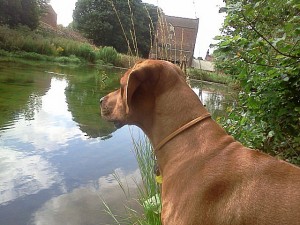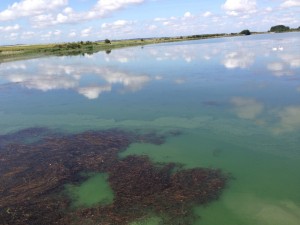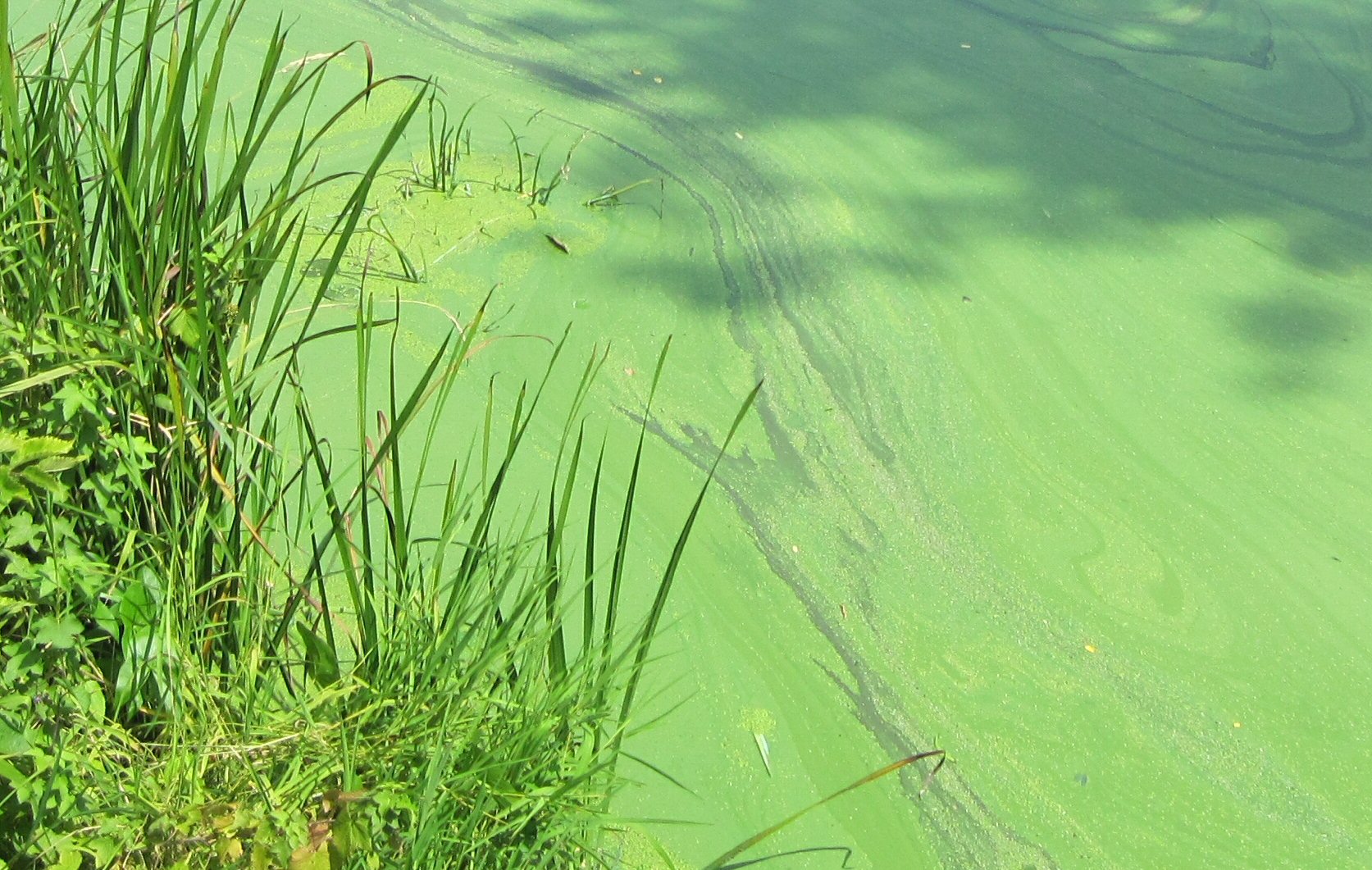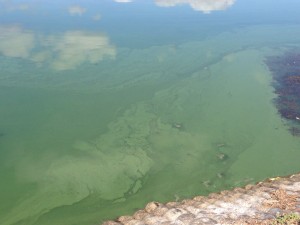At this time of the year especially, we often see something in our lakes, ponds and rivers called Blue-Green Algae (though sometimes, rather confusingly, it can appear red, black or even a murky brown colour!) I know lots of you will have heard of it, but what exactly is it and what dangers does it pose for our dogs?

With this very warm weather, many of us are opting not to walk our dogs until the late evening, when the sun’s strength is reduced. Its tempting to visit bodies of water for our dogs to cool off in too, but please steer well clear of stagnant ponds or any bodies of water that show a film, scum or algae. The water may be a breeding ground for a disease called Leptospirosis or may be playing host to blue-green algae. As the temperature of the water increases, so too does the likelihood of a highly toxic blue-gree algae bloom.

Algae is usually more concentrated towards the edges of the water but even small amounts can contain lethal doses. What makes this even more tricky for dog owners is that it can live on the surface or the bottom of the water, so the pond won’t always have a scum on the surface.
Some types of algae produce extremely poisonous toxins and should a dog drink this contaminated water, death is sadly all too common and rapid with symptoms occuring within 15 minutes to an hour of ingestion of it. Death can result within as little as 10-30 minutes (in some instances, dogs have been found dead at the edge of the water), and certainly within 24 hours of swallowing the toxins.
Please remember that even if the dog doesn’t actually drink the contaminated water, if he swims in it and then grooms himself, he will take in the toxins that way too.
Signs to look out for:
* severe vomiting which may contain blood
* breathing difficulties
* collapse and death
Action
So, it is important that if you have any concerns that your dog may have come into contact with blue-green algae, PLEASE SEEK IMMEDIATE VETERINARY ATTENTION. Although affected dogs can survive if treated quickly, clinical effects may show over a longer period of time and they may develop kidney or liver failure.
N.B. THIS ADVICE APPLIES TO YOUR CHILDREN TOO! PLEASE STAY SAFE


